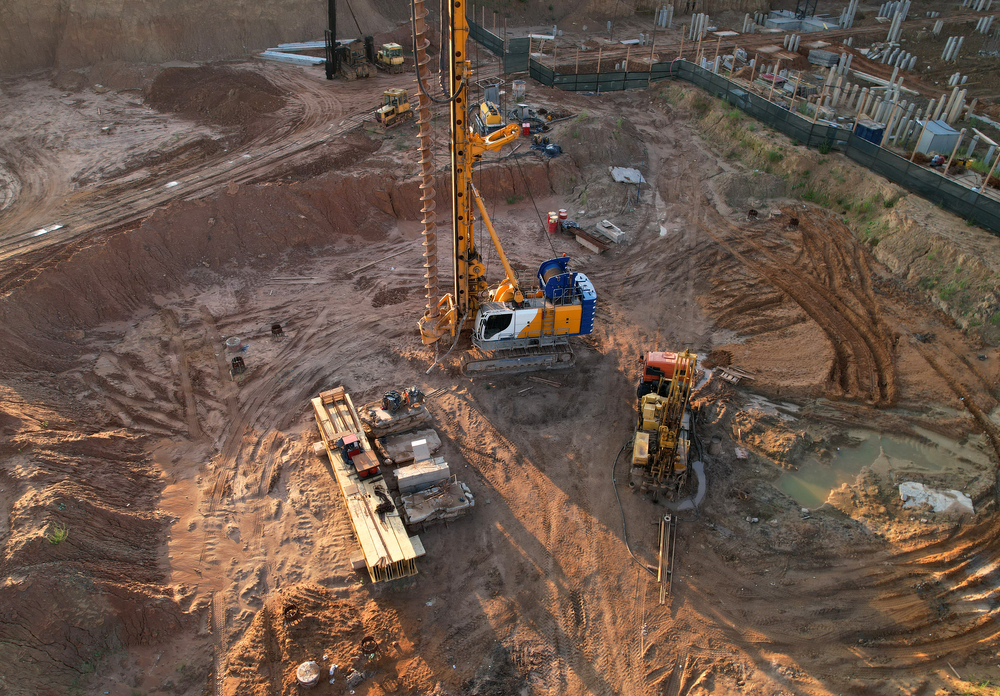Not known Facts About Geotheta
Wiki Article
The Only Guide to Geotheta
Table of ContentsLittle Known Questions About Geotheta.Geotheta Things To Know Before You Get ThisThe Ultimate Guide To GeothetaRumored Buzz on GeothetaFacts About Geotheta Uncovered

They conduct website examinations, accumulate samples, perform lab examinations, and analyze data to evaluate the suitability of the ground for building and construction projects - Geo Tech Engineer. Based upon their searchings for, geotechnical engineers offer suggestions for foundation layout, slope stability, keeping structures, and mitigation of geotechnical dangers. They team up with various other professionals, such as designers, architectural designers, and construction teams, to guarantee that geotechnical considerations are integrated into the general task layout and implementation
By analyzing the behavior and residential properties of dirt and rock, they can identify potential geotechnical threats such as landslides, dirt settlement, or slope instability. Their know-how helps prevent failures or crashes that might threaten lives and building. Below are some detailed obligations and duties of a geotechnical designer: Site Investigation: Geotechnical designers conduct site investigations to gather information on subsurface conditions.
They interpret the data to recognize the buildings and actions of the dirt and rock, including their strength, permeability, compaction features, and groundwater problems. Geotechnical Evaluation and Layout: Geotechnical designers evaluate the information collected throughout site examinations to examine the security and viability of the site for construction projects. They execute geotechnical computations and modeling to examine elements such as bearing capability, settlement, slope stability, side earth pressures, and groundwater circulation.
Geotheta Fundamentals Explained
Foundation Layout: Geotechnical engineers play an essential function in developing structures that can safely sustain the desired structure. They evaluate the dirt conditions and load needs to figure out the suitable foundation type, such as superficial structures (e.g., footings), deep structures (e.g (https://www.slideshare.net/ianhammond2191)., stacks), or specialized strategies like dirt renovation. They consider factors such as settlement restrictions, birthing ability, and soil-structure communication to create optimum structure stylesThey assess building and construction strategies, display site tasks, and perform area evaluations to confirm that the style suggestions are followed. If unanticipated geotechnical problems occur, they assess the scenario and supply suggestions for remediation or changes to the design. Danger Evaluation and Reduction: Geotechnical engineers evaluate geotechnical risks and risks related to the task website, such as landslides, liquefaction, or soil disintegration.

Partnership and Communication: Geotechnical designers work carefully with other specialists involved in a task, such as designers, structural designers, and construction teams. Reliable interaction and cooperation are vital to incorporate geotechnical factors to consider into the total job style and construction procedure. Geotechnical designers provide technological know-how, answer inquiries, and make certain that geotechnical demands are fulfilled.
The Ultimate Guide To Geotheta
Right here are some kinds of geotechnical designers: Structure Engineer: Structure designers specialize in creating and assessing foundations for structures. They analyze the soil problems, load demands, and site features to determine the most ideal structure type and layout, such as shallow foundations, deep foundations, or specialized strategies like pile foundations.They assess the aspects affecting incline stability, such as soil residential or commercial properties, groundwater conditions, and slope geometry, and establish approaches to avoid incline failings and mitigate threats. Quake Engineer: Earthquake engineers specialize in analyzing next page and creating structures to stand up to seismic pressures. They assess the seismic danger of a site, examine dirt liquefaction capacity, and develop seismic style requirements to make certain the safety and durability of frameworks throughout quakes.
They do field testing, collect samples, and analyze the collected information to define the soil residential or commercial properties, geologic formations, and groundwater problems at a website. Geotechnical Instrumentation Designer: Geotechnical instrumentation engineers focus on monitoring and gauging the actions of soil, rock, and frameworks. They mount and preserve instrumentation systems that keep track of variables such as dirt settlement, groundwater levels, slope activities, and architectural displacements to evaluate performance and provide early warnings of possible problems.
The 6-Minute Rule for Geotheta
They carry out examinations such as triaxial tests, loan consolidation examinations, direct shear examinations, and permeability examinations to gather information for geotechnical analysis and style. Geosynthetics Designer: Geosynthetics engineers concentrate on the design and application of geosynthetic products, such as geotextiles, geogrids, and geomembranes. They use these products to boost soil security, enhance inclines, provide drain solutions, and control erosion.They tend to be investigative individuals, which indicates they're intellectual, reflective, and analytical. They are curious, methodical, reasonable, logical, and logical. Some of them are likewise social, indicating they're kind, charitable, cooperative, client, caring, handy, empathetic, tactful, and friendly. Does this noise like you? Take our totally free occupation examination to learn if geotechnical designer is among your leading profession suits.
In the workplace atmosphere, geotechnical engineers utilize specialized software program tools to carry out calculations, produce styles, and examine information. They prepare records, evaluation project specifications, interact with clients and team participants, and coordinate task tasks. The workplace setup supplies a conducive environment for study, evaluation, and partnership with other professionals involved in the task.
Getting My Geotheta To Work
They regularly check out project websites to perform site examinations, examine geotechnical conditions, and collect data for analysis. These brows through include taking a trip to different locations, occasionally in remote or difficult surfaces. Geotechnical engineers may do dirt tasting, conduct tests, and display construction activities to make certain that the geotechnical facets of the job are being implemented appropriately.Geotechnical engineers likewise work in specialized geotechnical labs. Geotechnical lab designers function extensively in these environments, dealing with testing equipment, operating instruments, and taping information.
Report this wiki page